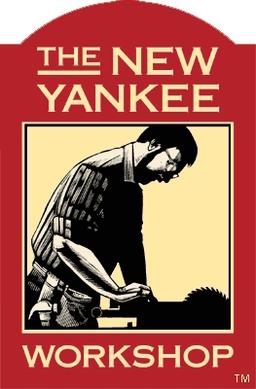I’ve found my finishing problem: I’m building things out of pine.
Traditional stain, gel stain, urethane, tung oil, danish oil…on oak, cherry or maple many of these look fine. No matter what I put on pine, it comes out looking like a septic prolapse.
Pine is so soft and the pores are so big that it soaks up everything. For me, pine is for painting.
For me I think pine is for the compost heap. The entire genus is dead to me.
What do you typically make, out of interest?
Well not finished pine, for starters.
Given I’m a carpenter whose trying out woodworking: sheds mostly.
Since March of this year I’ve built (not including a couple workbenches for my shop and various pressure treated outdoor projects) A medicine cabinet door, three bookcases, two decorative shelves, a replacement keyboard tray for my desk, two cutting boards, two sets of coasters, and I’ll have a pair of shaker-style end tables done and drying by Black Friday.
The medicine cabinet door is made of baltic birch ply, and is painted white.
Three bookcases: one smaller one made of select pine boards from Lowe’s, it’s wearing a couple layers of Minwax Polyshades in golden oak. The two larger ones (I iterated on the design showcased on Season 1 Episode 8 of the New Yankee Workshop.) Are also wearing Polyshades, in Pecan. They’re made of cabinet grade birch ply with more Lowe’s select pine for the face frame and trim.
Keyboard tray: Bought a jointer and planer, so it was time to practice milling and making panels. Meanwhile the particle board keyboard tray on my flat packed desk was starting to get knobbly and horrid from near-constant exposure to my wrist juice, so I bought a 2x4 and made it into a 1x12. It’s wearing Minwax mahogany flavored normal everyday yellow can stain with their Tung Oil Finish over it. The Tung oil finish didn’t do good things to that stain. It’s…not great.
Cutting boards and coasters…various hardwoods. The cutting boards are finished in a beeswax/mineral oil paste, the coasters in Minwax tung oil finish with no stain. These are fine.
Decorative shelves: A non-symmetrical floating wall shelf designed by my father, in walnut, with tung oil finish, no stain (who stains walnut?) They came out really good, though maybe not as glossy as I’d like? More coats of the finish would solve that.
As a “shop homework” project I made a 12" square raised panel out of some scrap pine and…whatever those ready made panels in the plastic wrap at Lowe’s are made of. Finished this with Minwax gel stain with tung oil finish on top. The stain actually dried and the oil finish didn’t move it around, but…the can called the color “walnut.” it looked more like “100 year old barn wall.” The simple back side of the panel took to this treatment better than the front did, because it matched the rustic feel of the stain more than the fancy beaded edge and raised panel did.
End tables: Table tops and lower shelves are white oak. The legs, apron and drawer fronts are longleaf pine, both sourced from a local sawyer, purchased as rough and milled myself. Trying out Watco’s danish oil on this project, cherry flavor. The tabletops are complete and two coats of the cherry Danish oil look absolutely spectacular. The drawer fronts are longleaf pine, finished them in the same Danish oil, following the instructions to “for soft porous woods such as pine, pre-treat by wiping with a cloth dampened with natural-finish danish oil then immediately wipe dry.” The result looked like a motorcycle accident.
I just now finished an experiment where I did the first whole wet coat and soak of natural, then one coat of the cherry. The results there are much more acceptable. I think that’s what I’m going to do on the pine components of this project, then spend the rest of my life making furniture from hardwoods.
Thanks for replying, that all sounds pretty cool!
You could try waxing the pine
Some woods are meant for the oven.
Keep experimenting and refining.
Pine can be stained and finished. Oak, cherry, and maple can sometimes look like crap. It’s a matter of preparing the wood properly. Try making sample boards. Sand consistently, don’t skip grits, don’t apply much pressure to the sander (let it do the work,) experiment with a pre-stain conditioner. It can help minimize splotching and some tooling marks.
Traditional (penetrating) stain needs to be applied evenly and benefits greatly from pre-stain conditioner.
Gel stains (sometimes called wiping stains, but that term gets misused) are wipe on, wipe off excess about five minutes later if you weren’t already doing that. They are made to sink in a certain amount and stop.
Urethanes don’t typically do well with back brushing, especially fast dry varieties. Spread urethanes thick and consistently and try not to go back over it. Lightly sand at 220 or 320 between coats and remove swarf with tack cloth or lint free cloth lightly dampened with alcohol.
Tung oils are rubbed in. Danish oils are applied thinly. These are relatively similar. Lightly sand between coats like above.
The book “Understanding Wood Finishing” by Bob Flexner is an astoundingly comprehensive book on the subject.
Don’t give up on pine just yet. Hemlock, heart pine, many others can all be quite beautiful in the right setting and application. For rough stuff, try the pre-stain conditioner
Thanks for the book recommendation!
It’s fairly expensive, but it turns out that there are several copies of both first and second edition available through my local library.
I have used pre-stain conditioner as recommended by the manufacturer. The issue I’ve had with traditional stain is applying the topcoat lifted the stain back off.
The gel stain functioned reasonably well, but I didn’t really get a depth of color I like. It came away looking kinda rustic. So I have my process if I ever get a contract with Cracker Barrel.
I’ve had such good results out of the few wiping oils/drying varnishes over hardwoods that I just can’t bring myself to face the fuss and muss that comes in every can of urethane. I might experiment with wipe-on poly at some point. And that Minwax Polyshades product is just straight-up liquid project ruiner.
To be clear, I haven’t worked with actual tung oil to date. I’ve used Minwax Tung Oil Finish on several products, which is a Danish oil-like product. As far as I can tell it’s a blend of drying oil and urethane that may or may not have some tung oil in it IDK. I like this product for projects I don’t intend to stain.
I think I have a process for surviving my current project with the Watco danish oil I’ve used on the tops: Where the manufacturer says to lightly wipe the surface with a rag dampened in natural (no added stain/dye) Danish oil, then immediately wipe dry on more porous woods, I’m going to go a full coat of natural before the dyed coat.
Coating chemistry aside, the faster I can get pitch pockets out of my life the better off the world will be.
I’ve built lots of stuff from pine and stained it, but I was never super happy with the result.
Some stains have a dual sample card where it shows how it will look on oak, and another on pine. I never got close to what their pine reference example looked like. It was like you need to have a few drinks first and then it looks sort of accurate.
That’s not to say that stained pine looks BAD in and of itself, but it feels dirty to even call it “staining” when it’s such a far cry from how hardwoods look when they’re finished.
Something something it’s called stain when it’s from the hardwood part of France, but here in Pine Country, we call it sparkling dye. 🤷
I think I’ve figured up a way to make the pine project I’ve been working on all November tolerable. Then I think I’m swearing it off as a material for furniture.
Have you tried a wood conditioner / pre-stain?
For pine especially, it is typically recommended before applying any stains. Prevents the blotches you will tend to get otherwise.
Also, there’s a big difference between construction lumber and something like prime SYP/doug fir. One piece of advice I have seen is, if you want to build from construction pieces, avoid 2x4s. Buy 2x10s or 2x12s and rip the boards you need of out of them. Poor man’s quarter sawn.
I really only used a 2x4 because I was trying out my new milling tools and just wanted something cheap to play with, and I figured I could get some use out of what I made, so I replaced my keyboard tray. I now buy rough sawn lumber from a local sawyer.
I’m just a passer-by here, but, I have a house with pine siding. It stains fine? Maybe we’re not thinking of the same thing.
I’ve used Benjamin Moore’s “ARBORCOAT Translucent Classic Oil Finish” tinted “Natural,” as well as on my deck tinted “Cedar.” For the sides facing South and West I would ideally re-stain every 3 years it looks like, and it does seem to be getting darker every time I do that.
I had always used this foaming wood cleaner, but one time in a pinch I bought the “normal” … not-foaming cleaner, and that turned out to be a big mistake. This cleaner didn’t clean so much as bleach, then when I put on the transparent stain it just looked like bleached wood. Luckily that was just a shed.
Edit: This is the cleaner - https://www.homehardware.ca/en/4l-2-part-oxygen-deck-patio-and-stone-cleaner/p/1874410
I’ve gotten a nice finish using a boatload of sanding and then either Briwax or stain, but it only really works if you want a pretty light finish at the end. I’m talking up to like 600-1k grit, too. But it does look damn shiny & good when you do it.
Prefinish, then stain. Or just gel stain.
Rob Cosman has videos about this subject on YouTube, you should check it out. It is possible to finish pine. For me, most of the time it’s just not worth it though.



